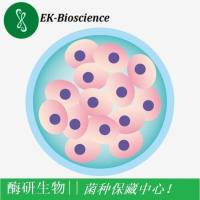The Yeast Three-Hybrid System As a Tool to Study Caspases
互联网
481
Caspases are cysteine proteases that play an essential role during apoptotic cell death and inflammation. They are synthesized as catalytically dormant proenzymes, containing an N-terminal prodomain, a large subunit (p20) containing the active site cysteine, and a small subunit (p10). The active enzymes function as tetramers, consisting of two p20/p10 subunit heterodimers. Both subunits contribute residues that are essential for substrate recognition. Activation of caspases culminates in the cleavage of a set of cellular proteins, resulting in disassembly of the cell or proinflammatory cytokine production. Inappropriate caspase activation contributes to or accounts for several diseases. The identification of caspase-interacting proteins that might act as activators, substrates, or inhibitors is therefore an attractive step in the development of novel therapeutics. However, caspase substrates and other proteins that bind specifically with the active heterodimeric p20/p10 form of caspases will escape detection in a classical two-hybrid approach with an unprocessed caspase precursor as bait. Alternatively, a number of so-called three-hybrid systems to analyze more complex macromolecular interactions have been developed. We describe the use of a three-hybrid approach adapted to the needs of caspases to detect and analyze the interaction of mature heteromeric caspases with protein substrates or inhibitors.









